One Size Does Not Fit All
My experience attending New York Fashion Week demonstrates that this industry is anything but size-inclusive
I am not valued for how palatable my body is to you.
March 24, 2022
I hate to love Fashion Week. I marvel at the annoyingly gorgeous dresses that grace the runways. I embrace agonizing hours of fittings and shows. I swallow the hundreds of dollars worth of Ubers. Fashion Week is an escape. It gives me confidence and makes me feel like a princess — even if just for a few days. But this past season, I felt anything but special.
I was invited to attend the Bronx and Branco show and had the opportunity to be dressed by the brand. When I walked into their showroom, I was surrounded by several colorful clothing racks. There were mini dresses covered in sequins, blazers with feather sleeves and an all-fringe flapper-style dress. They picked me to pull a piece to wear when attending the show, and I was eager to try anything and everything on.
But as I rummaged through the racks, I noticed an overarching theme. Every outfit was a sample size, either a size 2 or 0. I was puzzled: Why ask an influencer to pull a look if you know you don’t have her size?
That doesn’t justify what happened to me at that fitting — the blatant disregard for the diversity of body types.
Nonetheless, a woman placed a bunch of hangers in my dressing room based on the colors and styles I chose (pink corset bodices are my favorite). Everything was a sample size. I tried a few pieces out of respect for the brand, fully aware that nothing would fit.
“My boobs are too big for this,” I laughed, concealing my embarrassment. Every time the woman failed to zip up a dress, I was mortified. I glanced down at the ground at my sweatpants, eager to get dressed in clothing I was comfortable in and get out of there.
Yes, I struggle with self-confidence. I’d be lying if I said sometimes I didn’t compare myself to other influencers. But that doesn’t justify what happened to me at that fitting — the blatant disregard for the diversity of body types.
This seems to be a trend: Photographers favor skinnier influencers with modellike figures.
According to a 2016 study from the International Journal of Fashion Design, Technology, and Education, the average size of an American woman is between 16 and 18. But brands are not recognizing this reality. They avoid producing plus-size pieces, whether because they lack the experience or the funds for excess fabric. Not to mention, most models do not surpass a sample size (0-4). Diversity in sizing is an industry-wide issue that needs to be addressed — Fashion Week is only one example of exclusivity.
Regardless of how frustrated I was at that showroom, I didn’t come all the way to leave empty-handed. The designer was nice enough to dress me, so I felt like I needed to find something. Only one outfit semi-fit, a yellow sequin mini dress with underwire in the top. It wasn’t flattering. My boobs were too big for the dress, and it seemed lackluster compared to some of the other out-of-the-box ensembles. But I sucked it up, mustered a fake smile and took a shopping bag home, even though I cried in the car out of embarrassment.
The day of the show, I felt OK in my dress. When I arrived at the venue, photographers snapped a bunch of photos of me. But instead of zooming in on my face or shooting my outfit, they shot close-ups of my bag, a novelty taxi clutch. This seems to be a trend: Photographers favor skinnier influencers with modellike figures.
I took a quick look in my selfie camera at myself. Why didn’t these photographers want to take photos of me? I tried my best to hide the features I disliked about myself, but it was no use.
There was a cocktail party before the show, and I noticed several influencers roaming the room. Several of them were wearing those size 0 dresses I couldn’t fit into, parading around as if they were showing off their slim figures. It felt like they were indirectly taunting me — they could fit into the dresses, and I couldn’t.
It hurt a lot. I couldn’t pull off a bodycon like they could. I couldn’t wear a blazer down to my belly button without some spillage. It was unfair. My eyes darted anxiously around the room, and I counted the minutes until the event was over.
Why design clothes solely for the same mold?
I even noticed a girl in the same dress as me. She looked at least 5’ 10”, sporting the same look, but had a thinner figure. I scanned my body: my toned arms and thighs, breasts and measly 5’ 2” stature. One of us looked like a model, and one of us clearly didn’t. I continued to compare myself to that girl and every other skinny influencer dressed in the designer that brushed past me.
The models who walked the runway were no different. As I viewed them from the side, I noticed that none of them had a stomach over their waists. They did not have large breasts, and some of them just wore colorful pasties as tops. Almost every look had cutouts, whether on the collarbone, belly button, ankles, or all of the above. Not only did the clothes fail to reflect the bodies of the general population, but the models themselves did as well.
I was baffled by the underrepresentation of body types. Why design clothes solely for the same mold?
As soon as the runway ended, I rushed out of there, tears welling in my eyes. Street style photographers continued to shoot groups of tall, thin influencers while I stood in the corner waiting for my Uber. When I got inside the car, I broke down. The show killed my self-confidence, and I didn’t know whether to crawl into bed or sweat out the sadness on my Peloton.
Asking me to come to the showroom when the brand didn’t have my size to begin with is not OK. I was set up to be disappointed. Why weren’t they dressing a size 6 or a size 12? It’s unfair to only request to dress influencers who are thin when there are so many successful creators out there who aren’t a size 0. If they don’t create clothes for larger sizes, that’s their decision, and I can’t do anything to change that. But to leave influencers out of Fashion Week dressing just because of their size is toxic.
And I know it’s not just influencers. Brands project unrealistic body standards to their customers by showing thinner models on the runway. I may have had a front-row seat, but the poor message the brand was projecting most certainly transcended the venue. Any girl who sees that type of lineup — whether online or on an Instagram story — could feel triggered.
It feels cliché at this point to say every body is beautiful, but one cannot say it enough — some people still don’t recognize or believe it.
It’s time to represent realistic body standards. We’re in 2022, and with today’s body positivity movement, the fashion industry should really know better. Brands can’t expect every model or every influencer they’re dressing to be a size 0. I’m an athlete who works out religiously and eats healthily. But these people have the power to make me feel fat. Why is a size 4 not thin enough? It feels cliché at this point to say every body is beautiful, but one cannot say it enough — some people still don’t recognize or believe it.
This season, Fashion Week lost its sparkle. Instead of admiring all the lavish ensembles, I found myself wincing at the runways, watching one thin person after another show off their look. I critique myself for not having noticed this sooner; underrepresentation of different body types is nothing new. But now that I’ve experienced it firsthand, I have a new perspective.
I will never view Fashion Week the same, but that doesn’t mean I’ll stop attending. As an aspiring fashion journalist, I believe my recent experiences will make me a better, more informed writer and attendee. Modern runways are not just a clothing presentation — they’re a social experiment in diversity and inclusion. Fashion Week now means more to me than just feeling like a “princess.” The privilege to attend comes with a responsibility to authentically report what I’m seeing — and I’ll never take my ticket for granted.

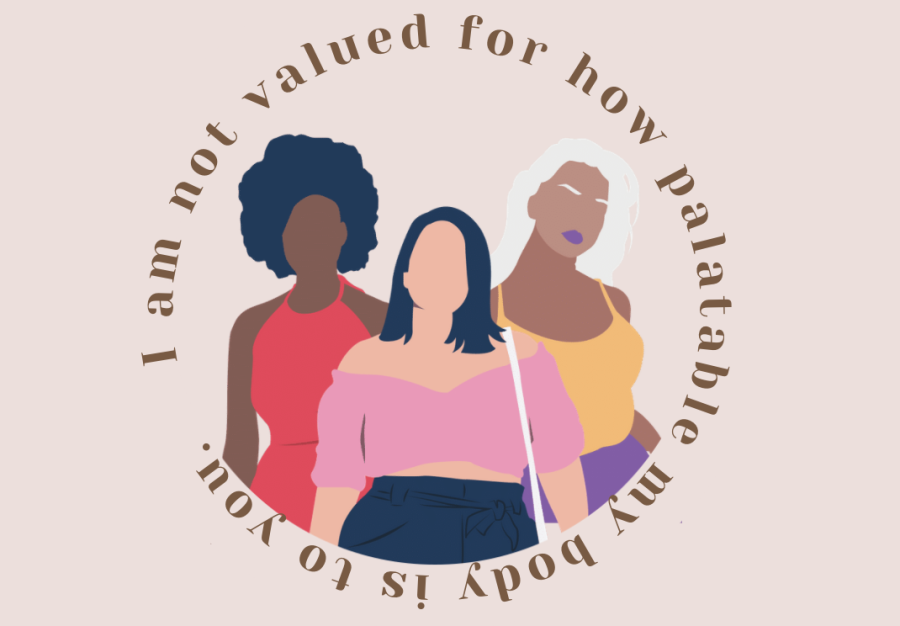
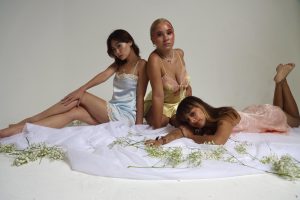
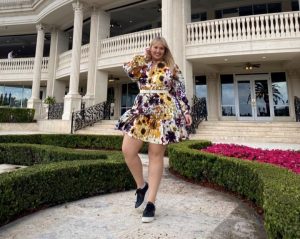
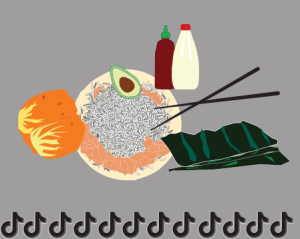
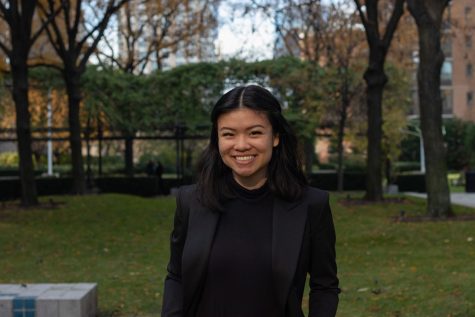








A. Montoya • Mar 25, 2022 at 2:42 am
I actually think the industry is learning and this fashion week was extraordinarily inclusive. I am beyond sorry you had that experience with that designer and I think what they did is reprehensible. Sadly, there will always be those designers, but at Runway7 we saw so many designers featuring all different body types and it was very noticeable and encouraging. Ydamys Simo show is only one example- she always prioritizes diversity. You were absolutely beautiful in that show! Ydamys runway always features models that represent the real people that are going to be wearing her designs.
Bottom line – You are gorgeous, as is. Keep your sparkle shining.